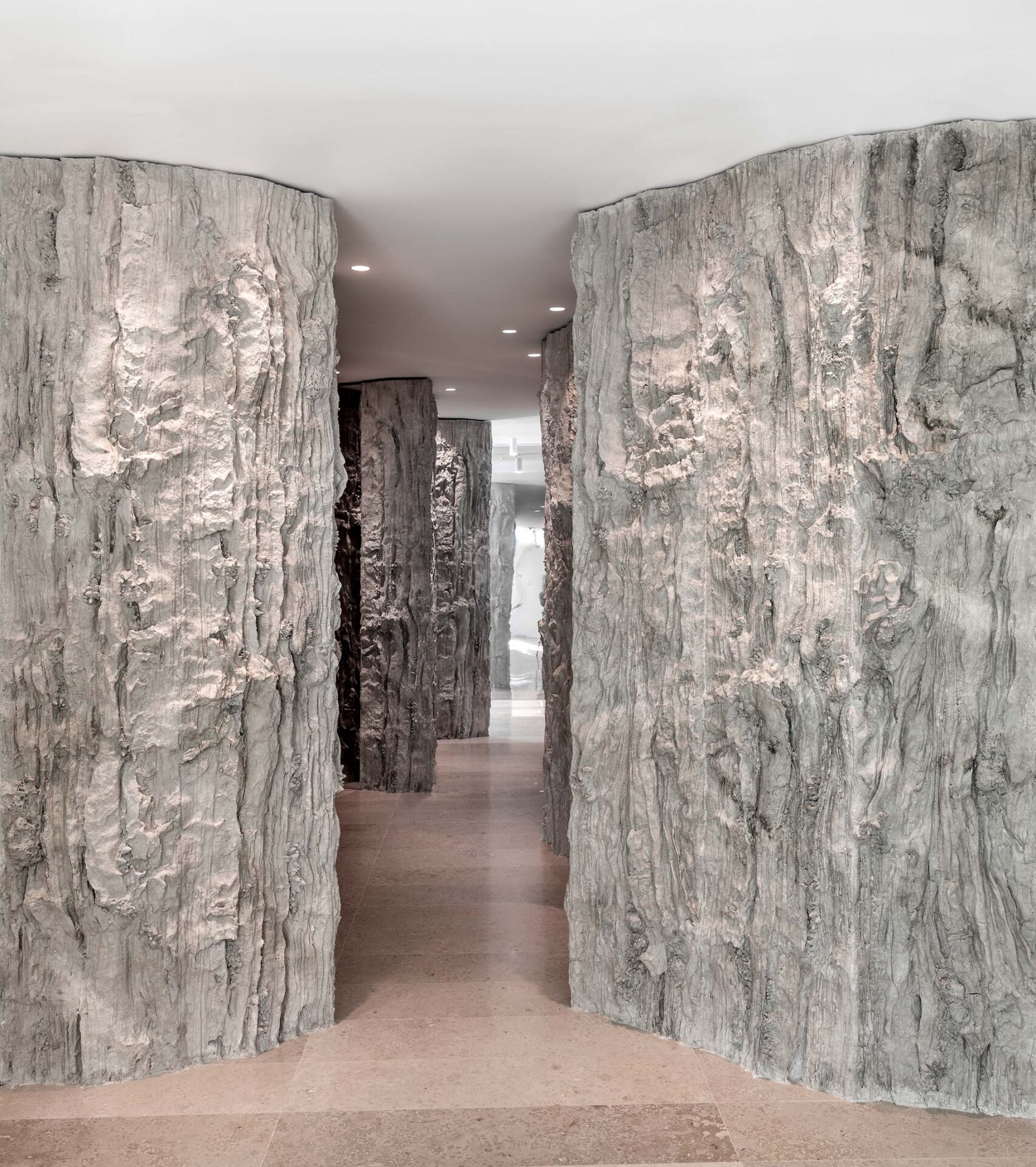Cristina Iglesias’s sculpture avoids a frontal view of the pedestal and appropriates spaces so that it can be seen from a wide variety of viewpoints. It also shuns that tradition in minimalist sculpture of walking on the sculpture, since in many cases her works emerge from the wall or even from the ceiling.
The fact is that she has developed her work outside any existing artistic movement or idiom, having developed a style of her own which defies classification and makes her unique. This artist has created a world full of sinuous plant walls, labyrinths composed of lattices, streams that seem to spring from the bowels of the earth… a series of works that she has located in cities as diverse as London, Houston, Antwerp and San Sebastián.
Iglesias has represented Spain twice at the Venice Biennale, in 1986 and 1993, on the latter occasion with Antoni Tàpies. She was awarded the National Visual Arts Prize in 1999, the Großer Berliner Kunstpreis in 2012, the National Graphic Art Prize in 2019 and the Royal Academy Architecture Prize in 2020. Her permanent works notably include the doors she made for the Prado Museum.
Hortensia Herrero first commissioned a work from Cristina Iglesias in 2014. It was a site-specific sculpture for the esplanade at the entrance to Mercadona’s headquarters in Albalat dels Sorells, and this was the origin of El fluir de la tierra, a 7 x 7-metre installation in which we can see one of Iglesias’s characteristic streams, full of leaves, in which the flow of water varies over time. These inward-looking rivulets invite us to reflect on ourselves.
From this relationship, the possibility arose of producing another work for the Hortensia Herrero Art Centre. This time, Iglesias utilized a passageway linking the two buildings of the art centre, in which for the first time she used a light-coloured material as opposed to her usual green plant walls. Visitors who enter this passage come across a series of mirrors which multiply its depth and in which they can see their image reflected, leading them to isolate ourselves and forget that they are right in the centre of the city. The point is that Cristina’s installations are not aggressive, but welcoming, and invite us to enter them and explore both the work and ourselves in depth. In the artist’s own words: “This piece presents a dreamlike world, very close to science fiction in its physical appearance, with elements that have a stony texture and appearances of organisms that you don’t quite recognise, and then all this world of reflections, of mirrors, places where you can’t enter and others where you can. I hope viewers will feel they are in another world, that this passage from one place to another will be a passage into a special, dreamlike world, and that it can remind you in turn of things you have seen in nature.”1
